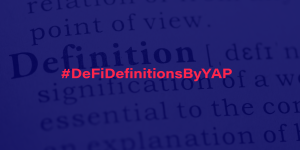
Introduction
In 2013, people began spamming images of a five-year-old Shiba Inu, across internet forums. With comic sans captions and a tendency towards ironic humour, Kabosu, the eponymous ‘Doge’, became an international sensation.
It would be a long road before Kabosu had a United States government department named after her. However, in December 2013, within months of Doge memes taking the internet by storm, a post appeared on bitcointalk.org: “Dogecoin – very currency – many coin – wow – v1.1 Released.”
What Makes a Memecoin?
Whether $DOGE has any real utility is often debated. However, its founding mission was clearly stated: to reach more people than Bitcoin (then infamous for Pirate Bay trading) and to bring goodwill, utility, and decentralised finance to all.
Memecoins and memes are not wholly different–they are both community-driven, intangible and thrive on absurdity. The difference is that memecoins can be traded. They are traditionally understood as speculative assets, buoyed by social consensus rather than any use value, meaning that their prices rarely stay stable for long. This volatility offers lucrative rewards for some, but less experienced investors can lose their investment almost immediately.
Traditional money and cryptocurrencies function in similar ways to memecoins. All forms of currency, like memes, gain their value and legitimacy from how widely they are recognised (and thus incorporated into larger socio-economic systems). The key difference is the trust that people have in these currencies to a) hold their value, and b) purchase services for them. The question is whether a meme like $DOGE can ever be taken seriously enough to foster the same trust. Unlike many memecoins, $DOGE has a long history of use in charitable endeavours, and there are certainly a few thousand vendors accepting payments in $DOGE who would trust it too.
Institutional Adoption – What Are They Sanctioning?
However, trust is certainly not as abundant as the memecoins now flooding the market. Pump.fun reached notoriety this year due to the absurd lengths its users employed to ’pump’ the value of the 7.41 million memecoins they had minted on the site. Meanwhile, Donald Trump caused a frenzy when he dropped $TRUMP without warning–before a steep decline in token value led to accusations of a ‘rug pull’, common in the memecoin world, where developers sell out of a project after raising its price, leaving loyal participants with worthless tokens. This seemingly set a precedent in global politics: $MELANIA followed $TRUMP and similar accusations were made towards the president of the Central African Republic last week after the $CAR token followed similar trajectories. Then, a scandal dominated the news cycle this week after Javier Milei, President of Argentina, endorsed $LIBRA, pumping its value, before key investors cashed out for over $87 million as the coin’s value plummeted, leaving 74,000 traders collectively losing $286 million. It has since emerged that the team behind $LIBRA were in talks with the Nigerian Government to launch a coin, and had also deep ties to $MELANIA.
Regardless of the ethics of such projects, one thing is clear. Play, speculation, manipulation, and internet culture are no longer external to political-economic structures but actively shaping them. This is evident in Musk’s Department of Government Efficiency, DOGE, which has not only taken the meme(coin) for its name but even proposed recording government expenditure on the blockchain for greater transparency.
Beyond the US, internet-native assets are gaining traction. The UAE government has embraced $SHIBA to enhance transparency and security, whilst Bitcoin’s status as a reserve currency continues to expand. The rise of $DOGE and $SHIBA, behind Bitcoin, prove that there is now a willingness among nations to incorporate, internet-native assets into formal economic and governance systems, regardless of their humble or subversive origins.
Looking Ahead – The Future of Memecoins
Memecoins represent both an opportunity and a challenge for crypto and traditional finance. Their rise validates crypto’s belief that value is shaped by culture and community, not just utility. However, their integration into institutional frameworks raises concerns about whether the original principles of decentralisation are being compromised.
Crypto’s future will not be dictated purely by financial logic, nor by memecoins, but by the interplay of politics, culture, and state power. Whether memecoins remain chaotic or evolve into mainstream financial instruments, their influence is undeniable. In a landscape where speculation, internet culture, and finance increasingly intersect, the only certainty is continued unpredictability.
Stay connected with YAP Global:
Website: https://yapglobal.naturaleyemedia.in/
X: https://x.com/YAPGlobalTeam
Newsletter: The Context

